Free speed
Want to ride quicker for free? Five motorcycling masterminds reveal the go-faster tips, tricks and techniques that don’t cost a penny
Words Martin Fitz-Gibbons Pics Bauer
Bend your inside elbow
» Expert road tester Michael Neeves reveals the one body position tweak that makes all the difference
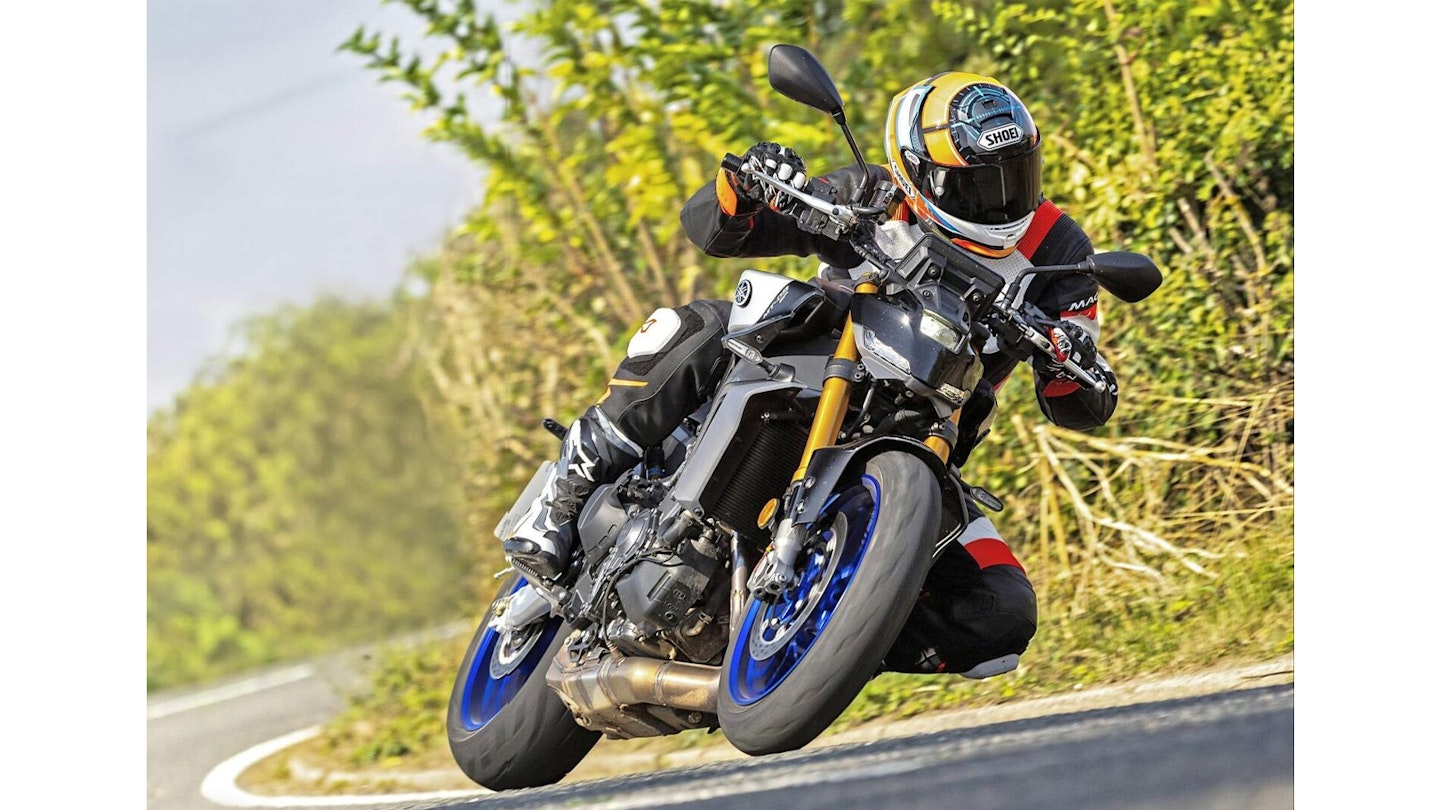
‘The thing that limits most people’s confidence through corners is body position. Narrowing it down further, it’s what you’re doing with your arms. You really see it when people say they’re more confident round lefts than rights, or the other way round – their body position tends to be different. In their weaker corner they’ll be quite straight-armed; in their good corner they’ll have their inside arm bent more. When you have your arms locked straight it doesn’t give you confidence, and then it’s a downward spiral.
‘When I’m instructing on track, I say that if you forget everything else today, remember to bend your inside arm into the corner. To get there you’ve got to lean forwards, and that puts more weight over the front wheel, gives you more feel, and gets you better connected with the bike. Bending your inside arm also pulls your upper body into the turn, which helps keep the bike more upright.
‘It’s only the inside arm – you can still keep your outside arm fairly straight. Things always feel more extreme than they look, so you may need to bend it much more than you first think.
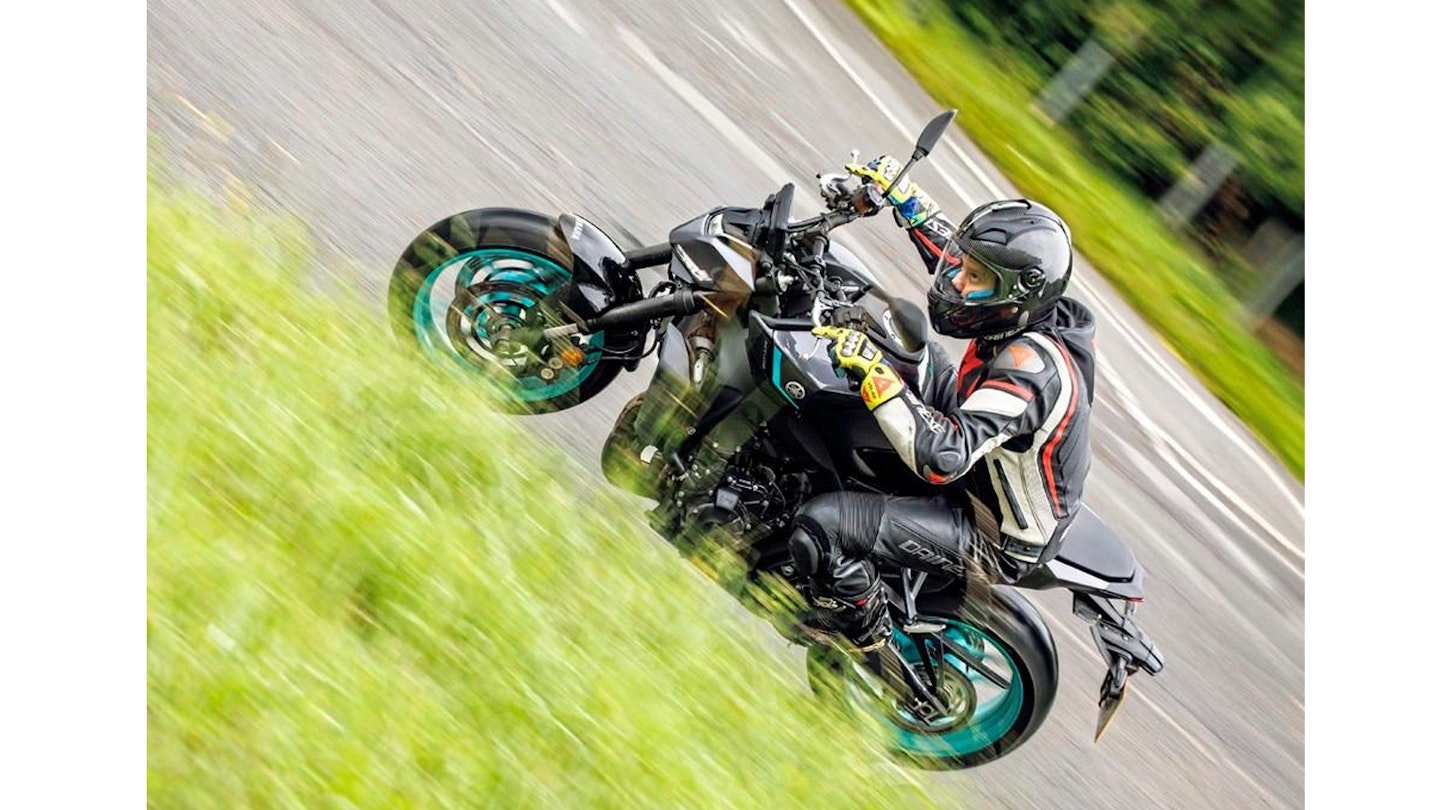
When people look at pictures of themselves, they always say: “I’m sure I was lower on the tank than that.” But they’re still sitting quite upright.
‘Imagine there’s a cone on the apex in the middle of the corner, and you’re trying to tap it with your elbow. On the road it’s a lot more subtle, but even just having a slight bend in your arm and not keeping it locked straight will help loads.
‘I remember being on a CBR at Donington Park years ago with my toe and peg on the floor, and it felt so dangerous because I was hanging off with my bum, but not the top half of my body. Then years later when I was instructing at the Ron Haslam Race School, I was following people doing the same thing – but with the right body position you’re not even breaking a sweat. The difference isn’t ability, it’s just knowing what to do.’
Neevesy
Neevesy has been a professional road tester for more than 20 years, instructed at the Ron Haslam Race School, and has ridden pretty much everything ever.
Reflect on your riding
» Professor Alex Stedmon describes how to make better decisions from behind the handlebars
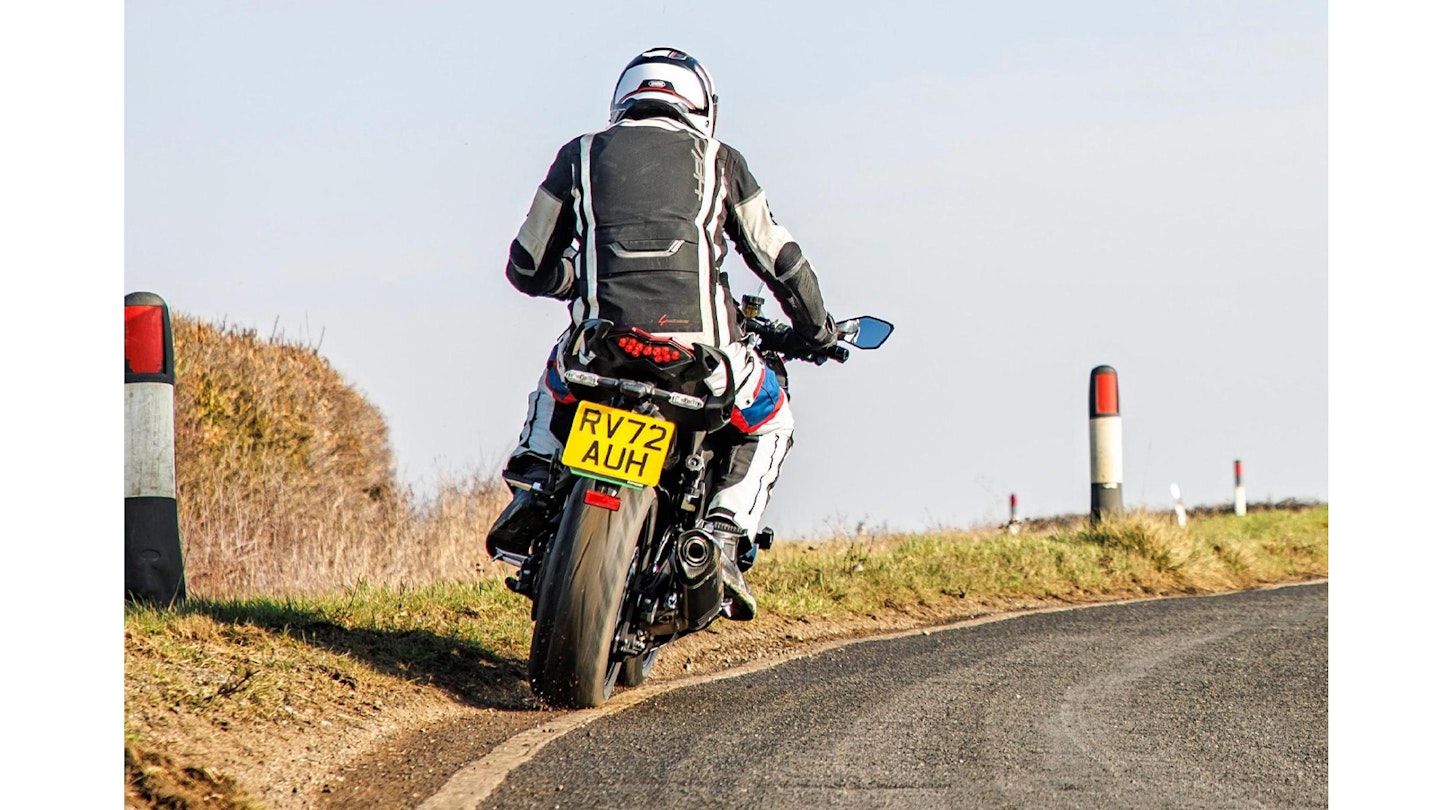
‘If you ask people “are you a better-than-average rider?”, most will say yes. But not everyone can be better than average. I know I have good days and bad days, and some riders say the same thing. But other riders don’t at all – and they’re the ones this can really help.
‘If you feel yourself being caught out during a ride – perhaps by a tight overtake, or if the person you’re following brakes unexpectedly – take a moment to have a bit of a sanity check. Am I getting tired? Is the weather changing? Do I need a pee or a coffee? It’s also helpful to reflect on how your riding may look to someone else. An overtake can look dangerous, or it can look really well executed. Which would you prefer?
‘This taps into the “theory of planned behaviour”, which says our intentions are influenced by three things: our own attitude; other people’s opinions; and our ability to overcome negative barriers like being angry or stressed. Reflecting on our riding makes the mental space to step back from all that.
‘There’s a psychological construct called the “locus of control”. “Internalisers” look at their own actions: “I could have been in a better position” or “I should have held back”. “Externalisers” pick out what other people do wrong, like blame other road users. I did a study with the University of Nottingham where we put riders in simulators, and we found riders who’d had further training tended to be internalisers.
‘All of this is about getting you to be more slick – overtake better, be more mentally prepared, and enjoy a more flowing ride. If you work to make things smoother, be less caught out and feel calmer and more in control, you’ll make better progress as a result.’
Alex
A professor of psychology specialising in rider behaviour, and the driving force behind Project PRIME, a safety scheme in Scotland that improved riders’ road positioning.
Slower in…
» …Faster out. Rapid Training boss and TT racer Dave Hewson reveals how less entry haste unlocks more overall speed
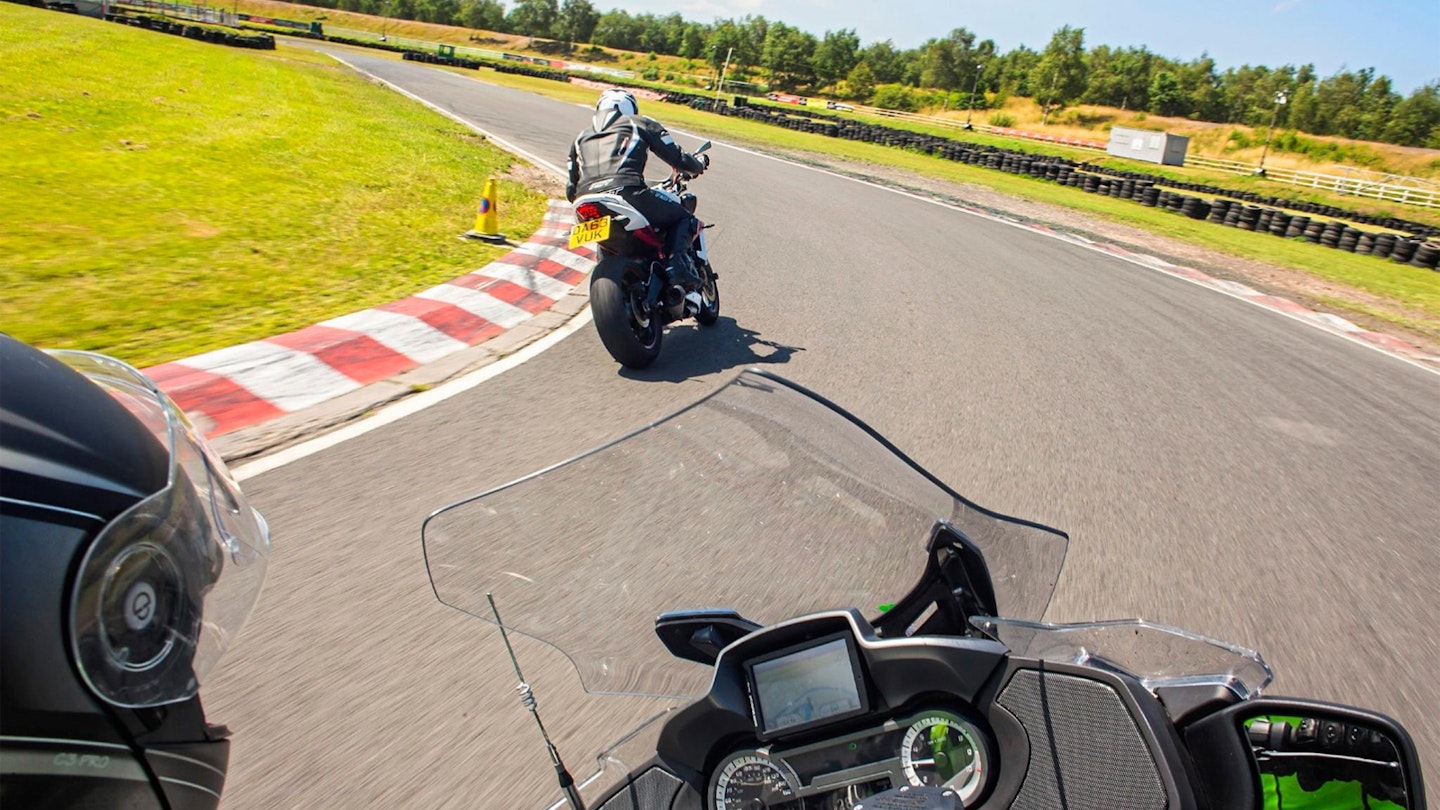
‘When riders try to go fast they usually rush into corners, thinking they’ll carry more momentum. But what actually happens is you’re on the side of the tyre for too long, or you end up wide of the ideal line. Both of these prevent you opening the throttle, and if you want to go faster the easiest place is in a straight line.
‘I’d call it a controlled corner entry. When you don’t rush into a turn you’ll have more capacity to get the bike on the right line, pointing the way you want, which means you can get on the throttle earlier and drive off the corner. You’ll go faster overall by going into the corner a bit slower to begin with. Over the years it’s been called “slow in, fast out”, but it’s still true both on the road and the track. If anything it’s even more relevant today because bikes are so much faster. The more power you have, the more of it you want to use – and to do that you need the bike pointing in a straight line.
‘Track riders generally try to brake later, thinking that’ll make them faster. But the chances are it’ll just mess up your corner entry. Instead, use the brakes harder and earlier. A lot of riders don’t pull the lever as hard as they can. More effective braking gives you more time to process things in your head, and more capability to begin turning.
‘On the road, the biggest issue we find is an old-school way of riding where people try to be very smooth. They close the throttle and coast towards the corner, as if using the brakes is a sin. But use them properly and you’ll be much more controlled on your corner entry, able to get the bike turned, and open the throttle much earlier.
‘Even if you don’t want to increase your top speed – even if you only want to do 60mph – you’ll still get to that 60mph quicker and hold it for longer if you use your brakes properly on the way in to a corner. You’ll end up going faster overall, without actually going faster. By going slower, in fact…’
Dave
The boss of Rapid Training, which offers the UK’s most complete advanced bike tuition, with courses covering both road and track riding catering for all experience levels.
Know where you’re looking
» Dakar Rally finisher and Off Road Skills instructor Llewellyn Sullivan-Pavey explains why the eyes have it
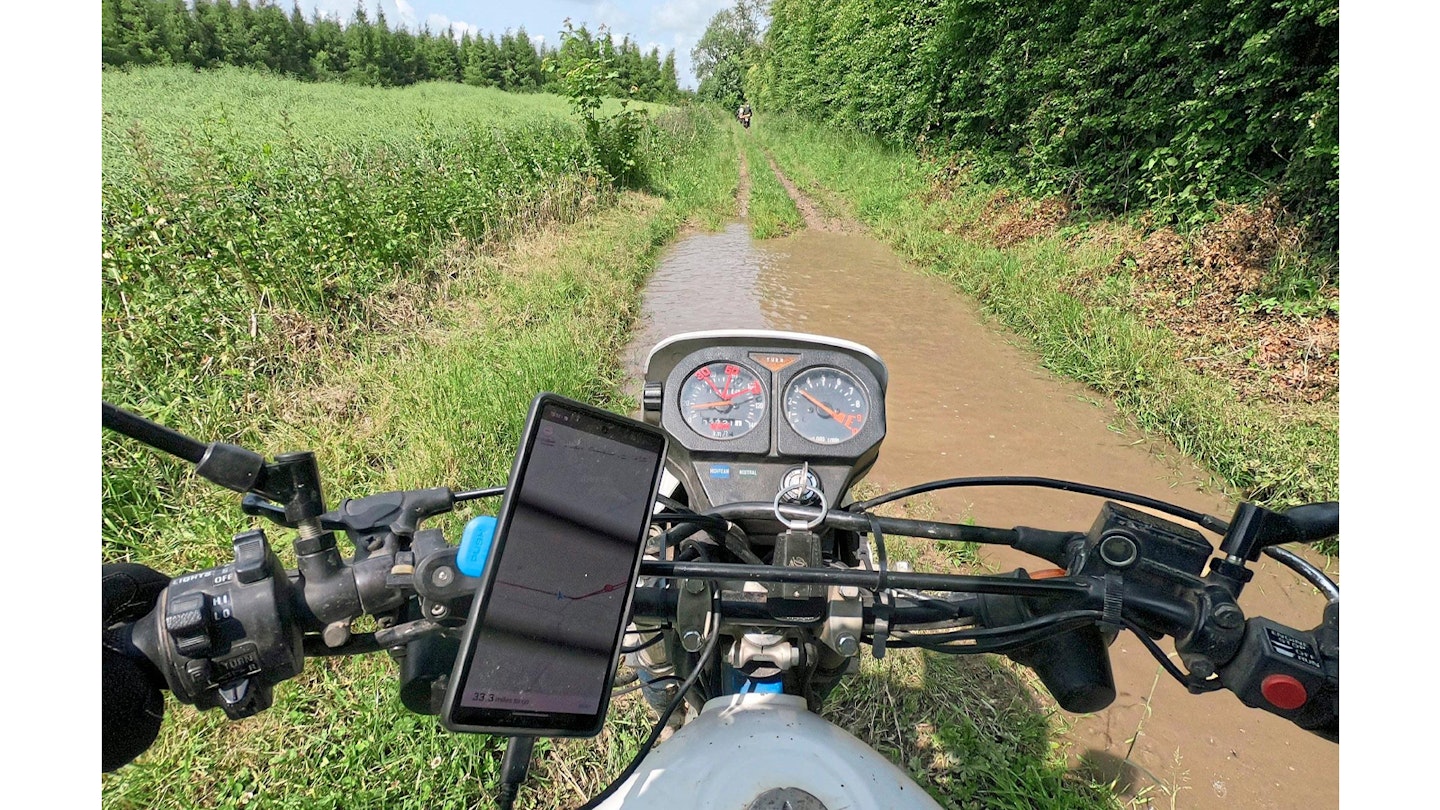
‘Whether you’re a beginner, an intermediate or an elite level professional rider, the most important thing is where you look. It’s really well documented, with studies showing sports teams can dramatically improve their performance when they train something called the “quiet eye”. Basically it’s how long your eyes rest on the thing you need to be looking at.
‘In adventure riding, this means you need to be intentional with where you look. The more information you can take in early, the more time it gives your brain to process. Sometimes you can see a hill coming a minute out, whereas if you wait until you’re at the bottom of the hill to look up it, it’s game over. Beginner adventure riders – and all the way up to quite good riders, actually – tend to look too closely at their front wheel. Riding off-road can be information overload at first, which causes us to hunch up and close in. If you can make yourself go “hang on a sec, let’s look up”, it really helps.
‘But I’m not talking just about looking further ahead. If you only look blindly at the horizon you may miss a rut, a rock or a root, which will cause problems. So if there’s something that needs attention then I’ll look, process and deal with it, then go back to seeing what’s in the distance. I may see a pothole when it’s 50 metres away and then I’ll only need half a second to process that I need to change my line and go around it, or lift the front to hop over it. The less experienced you are, the longer it’ll take to process, so you end up following the object in for longer. The key is not to get stuck on it – don’t follow the obstacle all the way until your front wheel hits it…
‘You’re always playing a game, adjusting your gaze between taking in things that are miles away, while also paying attention to the close-up detail. It’s not just changing where you’re looking, it’s being conscious of where you’re looking. It makes such a phenomenal difference.’
Llewellyn
Founder of online adventure empire Brake Magazine, where he makes some of the best mucky motorcycle videos. Go to YouTube and search for @BrakeMagazine.
Use reference points
» Racing royalty James Whitham explains how track riders can find time lying at the side of the circuit
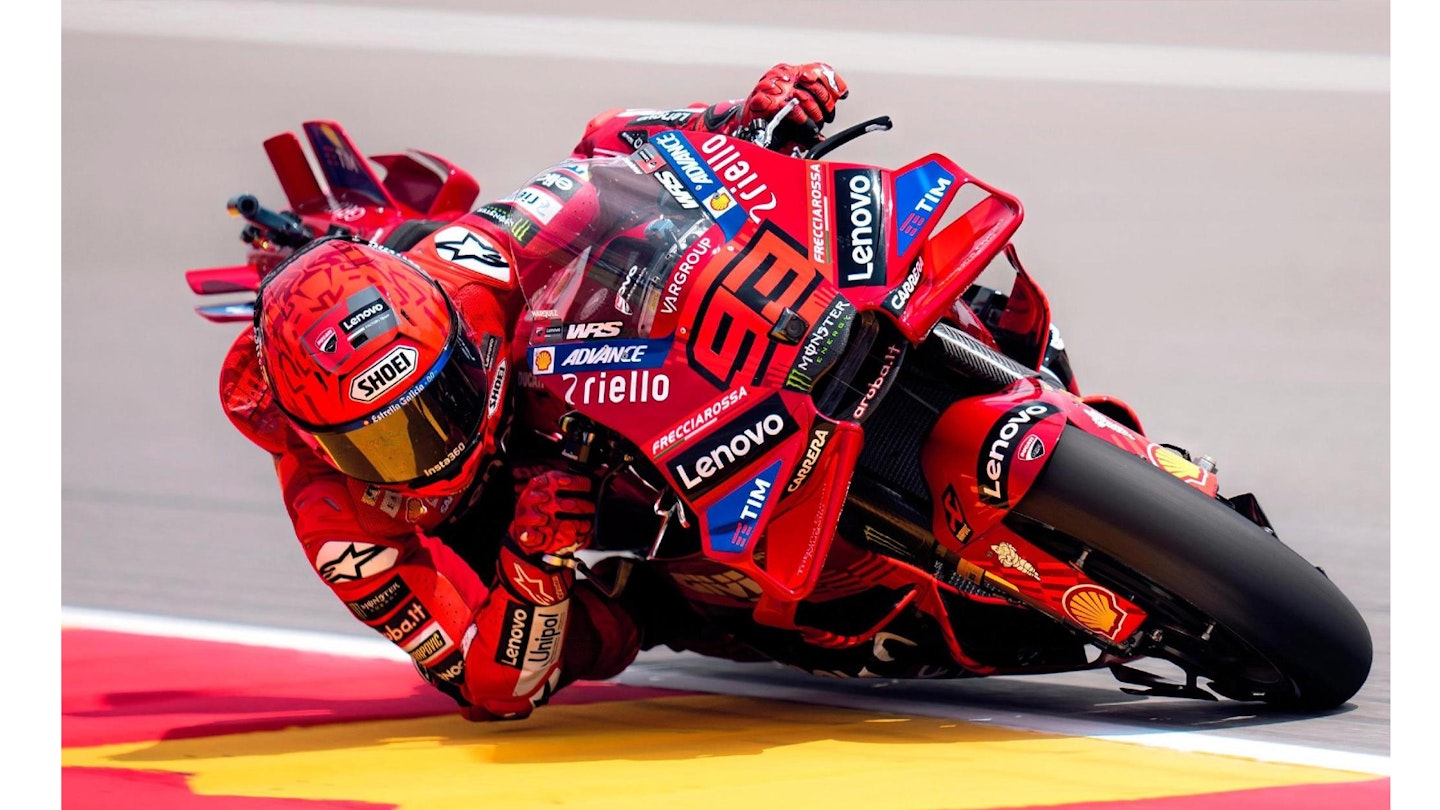
‘If I could give someone who’s new to track riding one piece of advice, it’s to use reference points. Find a braking marker, a turn-in marker and an apex point for each corner. It doesn’t matter if the apex point you’ve picked is five metres away from the actual apex – it’s still better than just staring at a corner, making it up and rattling in on a wing and a prayer. Sticking to reference points will get you some consistency, and you can build on that.
‘If there are distance boards on the approach to a corner then fantastic, but if not you have to look for something distinctive. It could be a change in surface, a kerb, a pole holding a loudspeaker, a marshal’s post, or even a skid mark. Some tracks are harder than others – at Silverstone there’s not much furniture and it’s all really far away from the track.
‘As you get more experienced these reference points become fluid. If you get a slide coming out of a corner, you may push your braking point on a metre because you know you won’t be going quite as quick. If you get a slipstream or catch a tailwind, you’re gonna have to brake a bit early.
‘But pick your markers wisely. Early in my career I was racing a Suzuki GSX-R750 Slabside at Kirkistown. It’s a long old airfield circuit where the back straight is an old runway, and I couldn’t find a decent braking marker. Then I spotted an ice cream van on the outside of the track which was in the perfect position. Later on I messed up my braking several times, before I realised it had moved during the day…’
James
Two-time BSB champion, WSB and World Supersport race winner. He now heads up a packed calendar of Track Training Days led by big name coaches – book at jameswhitham.com
